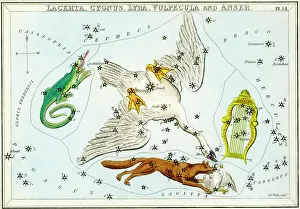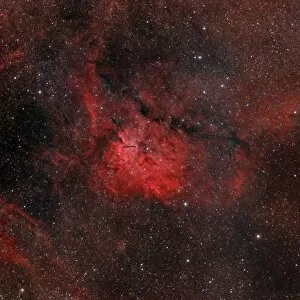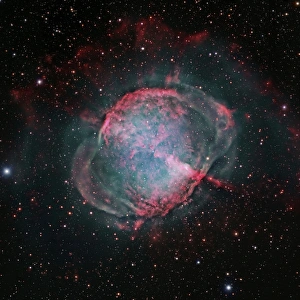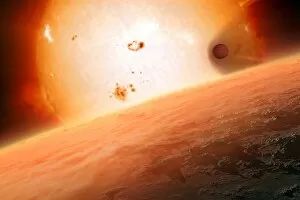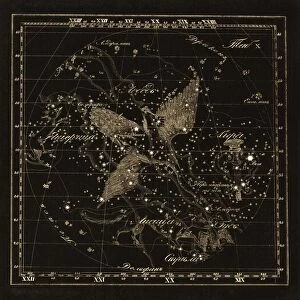Vulpecula Collection
"Exploring the Mysteries of Vulpecula: A Celestial Journey" In the vast expanse of our night sky, nestled between the Cygnus and Lyra constellations
All Professionally Made to Order for Quick Shipping
"Exploring the Mysteries of Vulpecula: A Celestial Journey" In the vast expanse of our night sky, nestled between the Cygnus and Lyra constellations, lies a celestial gem known as Vulpecula. Named after the Latin word for "little fox, " this constellation has captivated astronomers and stargazers alike with its intriguing beauty. Vulpecula shares its borders with neighboring constellations like Lacerta, Cygnus, Lyra, and Anser, and is here that we find ourselves immersed in a cosmic tapestry woven by ancient myths and modern discoveries. One such discovery is showcased in Johannes Hevelius' masterpiece, "Atlas Coelestis. " On Plate 25 of this celestial atlas, we are treated to a breathtaking view alongside the Constellation of Pegasus. The intricate engravings depict not only these stellar formations but also offer glimpses into wonders beyond our own galaxy. Among these wonders are two notable nebulae - the Andromeda Nebula and the Dumbbell Nebula. Engraved with meticulous detail, they reveal ethereal clouds of gas and dust scattered across space. NASA's stunning image captures the Dumbbell Nebula's mesmerizing hues within Vulpecula's embrace. While exploring this captivating constellation, one might encounter another creature bearing its name - the Common brushtail possum or Trichosurus vulpecula. This marsupial adds an earthly touch to our cosmic journey through Vulpecula. As we delve deeper into this astronomical realm, we stumble upon Messier 27 - famously known as The Dumbbell Nebula. Its distinct shape resembles weights used in exercise routines while harboring secrets about star formation and evolution. But perhaps most awe-inspiring is an extrasolar planet caught in transit against its parent star within Vulcan's boundaries. Peeking above its top edge, this celestial dance reminds us of the vastness and diversity of our universe.

